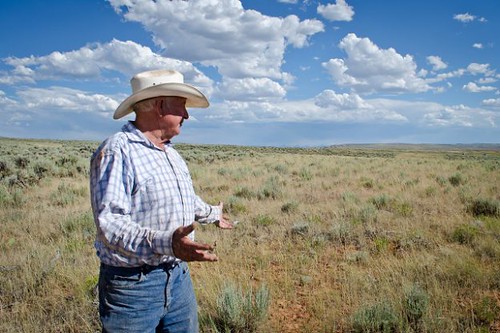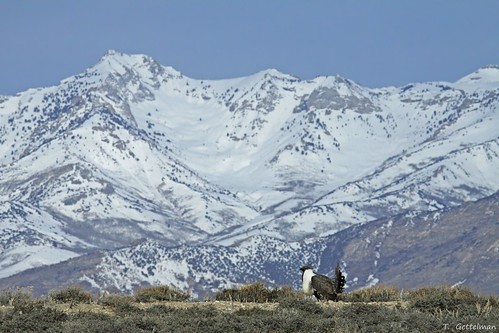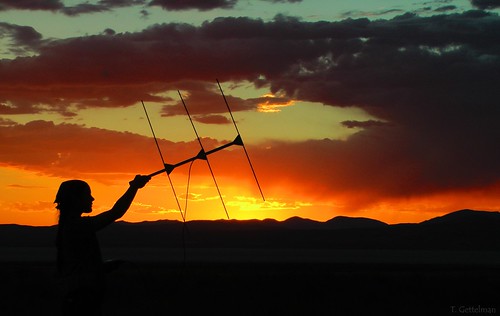
This past April, we woke up at 3 a.m. and made our way to a blind amid an expanse of sagebrush on a ranch in central Montana. When the sun rose that morning, I saw my first sage grouse--actually, I got to see more than 100 of them!--when the birds arrived at the lek site for their famous tail-shaking springtime courtship dance.
Seeing sage grouse in action reminded me how important it is to do what we do here at USDA’s Natural Resources Conservation Service (NRCS). I saw firsthand how agriculture and wildlife can co-exist and thrive. In the West, we work with over 1,300 ranchers through the NRCS-led Sage Grouse Initiative (SGI) to improve their ranching operations while also helping this iconic bird.
It’s been a big year for sage grouse. The U.S. Fish and Wildlife Service (FWS) determined last year that the species didn’t merit protections under the Endangered Species Act because of the collaborative conservation efforts underway to help the species. Central to that effort were ranchers, who have stepped forward for many years to make a difference.
But last year’s decision did not mean we slowed down our conservation work through SGI. We’re here for the long haul, building on previous successes by implementing our Sage Grouse Initiative 2.0 Investment Strategy, which will conserve an estimated 8 million acres of sagebrush—along with 350+ species that depend on it--by 2018.

With the help of conservation partners, NRCS has conserved 5 million acres of sagebrush rangeland and reduced threats to sage grouse. In the past six years, SGI and ranchers have:
- Reduced the threat of invasive grasses and wildfire by managing for healthier rangelands on 1.8 million acres.
- Removed 457,000 acres of expanding conifer to reclaim core sage grouse habitat.
- Protected 451,000 acres of agricultural land and prime wildlife habitat for 350-plus sagebrush-dependent species.
- Improved grazing strategies to enhance range habitat on more than 2.7 million acres for sage grouse and other wildlife species.
- Conserved 12,000 acres and improved 179 acres of wet meadow and riparian areas for brooding hens.
- Marked or moved 628 miles of high-risk fences to reduce sage grouse collisions by 83 percent.
We continue to fine-tune our conservation efforts through science and research. In the past year, we’ve documented how removing encroaching juniper to restore sagebrush benefits songbirds as well as sage grouse. We’ve also studied how and where to reduce the risk of converting sagebrush into cultivated cropland, which we made available on the new SGI Interactive Web Application. This new online mapping tool provides free data on rangewide conditions, helping NRCS conservationists and partners plan and prioritize conservation projects.
Plus, we now use our successful efforts in sagebrush country as a model for the rest of the country. We are applying what we’ve learned to other priority species and landscapes to replicate success through Working Lands for Wildlife (WLFW). The future of wildlife, agriculture and rural ways of life depend on this shining model of collaborative conservation.

If there’s one thing we’ve learned, it's that, together, we can make a difference. We’re proud of our collective past achievements and look forward to continuing our work with America’s producers to conserve landscapes for future generations.
Learn more about our work in sagebrush country in SGI’s Tracking Success 2016 Report. To learn more about assistance opportunities, landowners should contact their local USDA service center.
